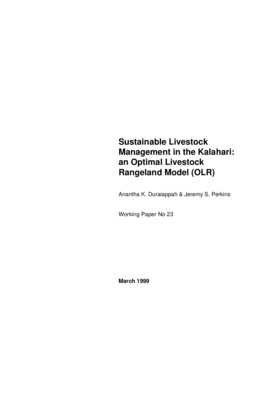Sustainable Livestock Management in the Kalahari: An Optimal Livestock Rangeland model (OLR)

Special tariffs on beef imports by the European Union, together with wealth created by the diamond industry have provided both the incentive and the means for Botswana to embark upon an ambitious programme of livestock expansion into the Kalahari, an arid savanna system in Botswana. The result has been changing rangelands as well as a drastic reduction in the size of the Kalahari’s migratory wildlife populations. Existing studies have tended to be simplistic and have not integrated the economic and ecological driving forces and feedback loops. We have attempted to address this shortcoming by developing a model that integrates two sub-models in some detail; one ecological and the other economics. The ecological aspects are captured firstly by considering the piosphere effect which is driven by borehole and livestock density, and then modelling the overgrazing which is determined largely by the economics of the livestock sector. The model not only captures the browse-grass dynamics but also the inter-temporal spatial dynamics of this interaction. The model uses non-linear programming techniques provided by the General Algebraic Modelling System (GAMS) to solve the model. Preliminary results from the OLR (Optimal Livestock Rangeland) model suggest that the price of cattle together with rainfall play crucial roles in governing the grass-browse interactive dynamics. Furthermore, the important role browse plays in the livestock sector is highlighted and is a component which cannot be ignored in rangeland management.
Cite this publication
Available at https://www.iied.org/8110iied